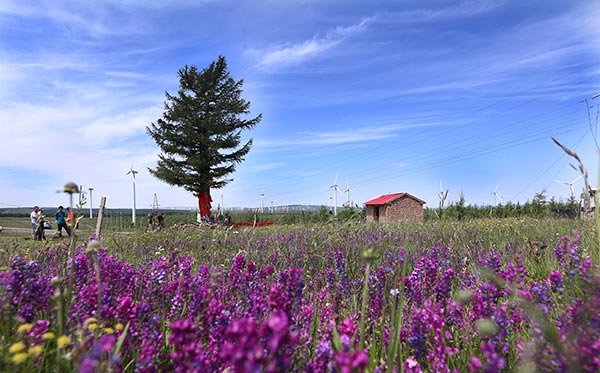 |
|
The Tree, a tree believed to have convinced researchers to build a national forest at Saihanba. [Photo by Zou Hong/China Daily]
|
On his advice we left, fearing our presence was impeding the mother in her parental duties. However, just before we left, this gentle man, who said he had been keeping an eye on the fledglings for several weeks, carefully readjusted the surrounding grass so as to better shield the birds from the sun.
In bygone centuries this place was a paradise for animals. Emperor Kangxi (1654-1722) of the Qing Dynasty, a consummate archer and the first Qing emperor to hunt at Saihanba, is said to have captured 318 rabbits in a day. Today the mature forests have coaxed back wild animals including deer, wild ducks and boars.
But most of the animals are shy. The only time I saw one was at Seven-Star Lakes, when a wild duck suddenly jumped out of the wetland in front of me and glided for a short while before diving back into the tall grass.
However, as our bus headed along the road between patches of farmland with forested mountains as their backdrop it was evident that many scarecrows dot the potato fields.
"We do have boars here," the driver said. "By day they hide in the forest, and by night they come out for potatoes."
Another place of beauty at Saihanba is where the forest park bor-ders Inner Mongolia, and where several rivers originate before running through a myriad of terrains towards places including Beijing and neighboring Tianjin.


























 Raymond Zhou:
Raymond Zhou: Pauline D Loh:
Pauline D Loh: Hot Pot
Hot Pot Eco China
Eco China China Dream
China Dream China Face
China Face






